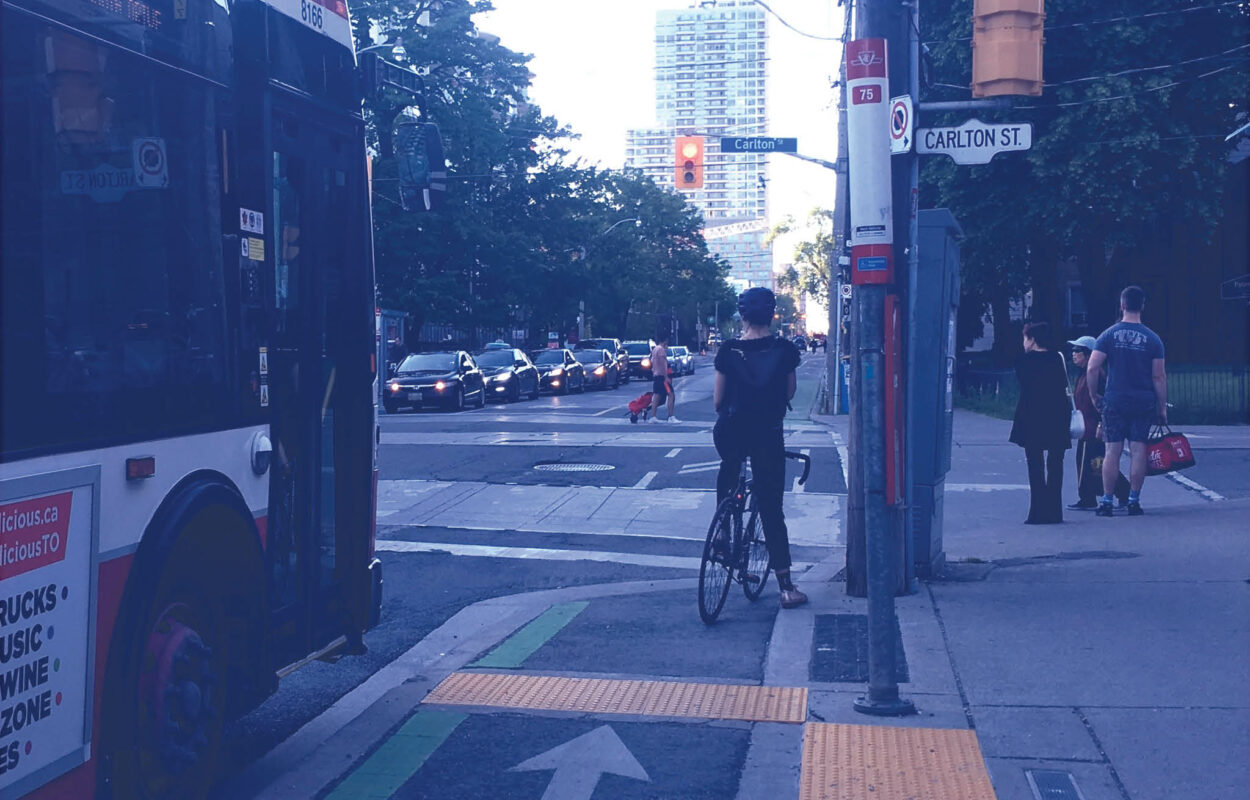
Public transit may be the safest form of transportation, but for many people, the first and last leg of their journey to and from the train or bus is a hazardous one. A new guide from The Centre for Active Transportation highlights the challenges of walking and cycling to transit and offer solutions based on international best practice.
Improving Active Transportation and Public Transit Integration – A Guidebook for Policy and Planning is for planners, decision-makers, and interested community members to find policy, infrastructure, and programming approaches to removing barriers to safe and efficient access to transit stations on foot or by bike.
“I’m excited about this new resource which can help more people get to transit safely,” said Nancy Smith Lea, TCAT Director. “We outline strategies and provide tangible guidance for how to make dedicated plans that move beyond simply setting high-level goals. We hope it inspires municipalities and transit agencies to create better walking and cycling access to transit.”
The guide includes case studies of North American jurisdictions that maximize opportunities for access to transit by active modes of travel, profiles the potential for transit projects to serve as Complete Street projects, and includes audit tools that community members can use to evaluate current conditions for walking or cycling to their transit stop or station.
“All transit users are pedestrians at some part of their trip. It’s time to start planning for transit as planning for pedestrians as well.” said Alex Gatien, author of the report.
Quick Facts:
- 11% of TTC users bike to transit, but an additional 60% would consider doing so if infrastructure is improved.
- Safe Routes 2 Transit in San Francisco not only increased active transportation access to transit, but also boosted spending at nearby businesses.
- While bikeshare journeys in urban areas are more likely to substitute for short transit journeys, they are almost exclusively used to access transit in suburban areas.
